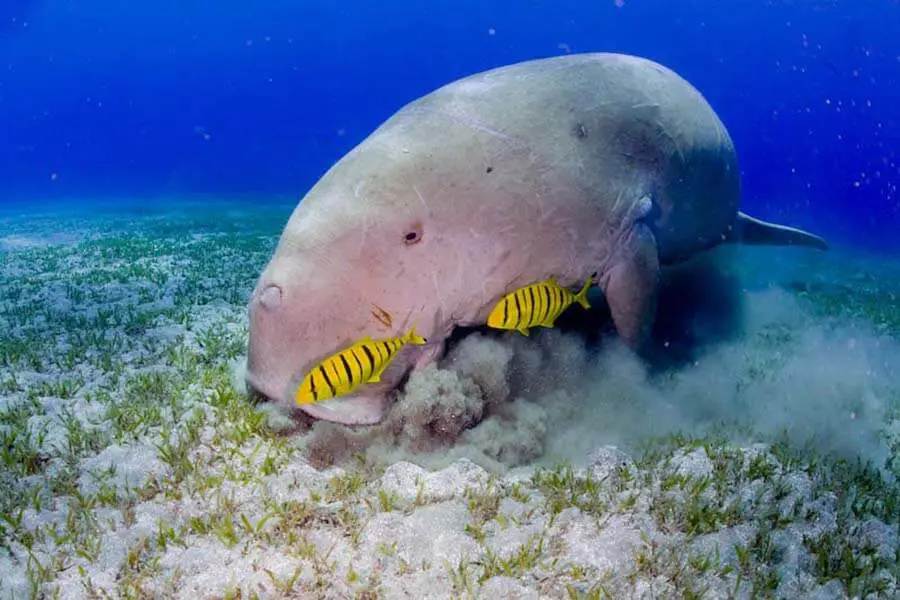

A dugong grazing in its natural seagrass habitat. Photo courtesy of Fergus Kennedy.
Time for Change!
Winter in Florida was unusually chilly, but our Quarters for Conservation program stayed on fire! We’re excited to spring forward into a new cycle of projects. For the next three months, your vote will support a conservation project helping marine mammals throughout the world’s oceans.
The Projects
Sperm whales, which can reach 60 feet in length and weigh up to 45 tons, were historically hunted for their spermaceti—a substance that fills their massive heads which may be used to regulate buoyancy. Though this practice ended decades ago, threats such as ship strikes, entanglements in fishing gear and environmental pollutants persist today, and long-term monitoring has shown populations are declining as much as four percent per year. The Dominica Sperm Whale Project is an innovative and integrative study of these deep ocean divers and the first to follow specific pods throughout the years. Funds from Quarters for conservation will support research, public outreach, media relations and local conservation projects intended to protect sperm whales.
The dugong is found in warm coastal waters of the Indian and west Pacific oceans. Related to manatees, they are similar in appearance and behavior, except for their fluked tail. The last viable population of dugongs in Africa is found along the Bazaruto Archipelago in Mozambique, where unsustainable fishing practices have led to the demise of vital seagrass habitats. The Dugong and Seagrass Conservation Project is working with local fisherpeople to collect population data using mobile phone technology. Quarters for Conservation funds will help researchers continue focusing on sustainably conserving the seagrass habitat and saving dugongs in this region.
Barra de Potosí is a coastal gem in the southwest Mexican state of Guerrero, where humpback whales breed each winter and pods of dolphins frolic year-round. The fishing industry that has supported this area for years is currently in a state of collapse due to declining fish populations, likely caused by climate change and an increase in gillnet fishing. Because marine mammals are so popular with tourists, the community is attempting to revitalize its economy through sustainable dolphin and whale-watching practices. The Whales of Guerrero Research Project and Oceanic Society have learned the whales in this region are part of the endangered Central America humpback group, which only has about 400 individuals left! Marine mammals have never been studied in Guerrero, so there is little government support, but these dedicated conservationists aim to change that. This organization has laid a strong foundation and funds from Quarters for Conservation will allow them to continue research, education and providing the community with jobs.
Cast Your Vote!
Your admission to the Zoo already helps these projects—25 cents from each admission (and five dollars from each membership purchased) goes towards Quarters for Conservation. On every visit to the Zoo, you’ll receive a “quarter” token to use to cast your vote for whichever conservation project most inspires you. If you’re extra passionate about any of the projects, feel free to drop in “real” quarters or dollar bills! Together, our small corner of the world can help make a large impact for marine mammals across the deep blue sea.
